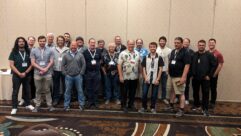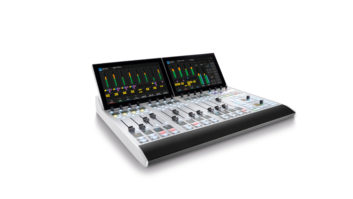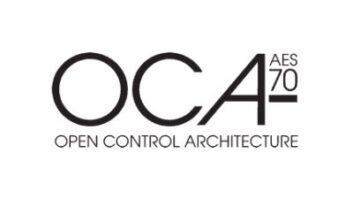This is one in a series of occasional articles about station infrastructures.
One of the cool things I love about being an engineer is the opportunity to help get a new facility up and running and on the air.
In March I had the privilege of traveling to the Central American country of Honduras to assist with a studio upgrade and installation of new Axia equipment they purchased.
I was hired by Axia as a freelancer to assist. The project struck me as a cool one, and I thought I’d share the experience with RW readers, out of interest not only in the Axia infrastructure but the project in general.
Audio Video owns and runs eight radio stations in Honduras, four national and four regional. The main studios and offices are located in the capital city of Tegucigalpa.

Audio Video owns and runs eight stations in Honduras, four national and four regional. There are three regional offices, one each in La Ceiba, San Pedro Sula and Choluteca. There are approximately 40 antenna sites nationwide, the most in Honduras. All operated and maintained by a staff of 160.
Radio America is their flagship station; it celebrated 60 years of existence in 2008 and is famous for its objectivity and comprehensive coverage of the news, broadcasting at 610 kHz 10 kW and 94.7 MHz 10 kW. It received an upgrade in its infrastructure and a new air studio within the multilevel building that houses six of the eight stations, both AM and FM.
Cat-6
Audio Video’s General Manager Chris Mueller and Director of Engineering Joseph Banegas decided to build a facility that would be modern and last a few years yet still be technologically current and offer some flexibility for growth and expansion.
This involved a reworking and rethinking of the current method of delivering audio throughout the plant. With a 20-year background as an IT and network manager, Banegas leaned toward options that would utilize Cat-6 and Ethernet.
His research led him to Axia, and with the help of Alfonso Lopez of 305 Broadcast out of Miami, Audio Video purchased an Axia 24-input Element console with an embedded Telos call director and several Axia nodes that would facilitate the switch from analog delivery of audio to audio over IP technology.
Audio Video purchased and installed several Cisco 2690 switches, interconnected via fiber-optic cable, and ran Cat-6 cable from each control room to what would become the Master Control for the six stations. This new master control would now centralize the I/O from each studio and also facilitate the connections of the outputs from each studio to the STL transmitters transporting the audio to transmitter sites around Tegucigalpa and surrounding areas.
My main purpose for the onsite visit was to make sure the Axia equipment purchased was set up and configured properly and to train the staff on how to use it and connect it.
The engineers and technicians from Audio Video had installed the new racks and run and terminated Cat-6 cables throughout the multilevel facility. They’d mounted the newer equipment and placed and powered up the new Element console. The Livewire network had been preconfigured by local Cisco engineers onsite according to specifications and was online.
The new Radio America air studio, which was patterned after the existing original studio, was finished and ready for broadcast use. The new control room had that new equipment smell and was ready for connectivity to the new master control. A couple of racks housed both the new and existing equipment to be used in the new Radio Americas studio. All that was left was for the Axia nodes and the console to connect to the Livewire network.
Training of the staff began shortly after my arrival and introductions by Josef Banegas as the engineer sent from to assist with the installation. One of the technicians named Mario Fernandez spoke pretty good English and became my interpreter for the remainder of my visit.
My Spanish was sorely lacking but although a challenge at times not a complete hindrance. I learned a long time ago under similar circumstances in Mexico how to communicate technical terms in broken Spanish.
On the Hub

Master Control Rack with Cat-6 cables entering from the studios. I started by explaining to the staff the concepts of Livewire audio delivery and how Axia takes advantage of that. Using my laptop and lots of hands-on illustrations, I was able to have them configure the nodes and have them connect to the Livewire network. Next was discussing how Axia treats inputs and outputs of analog audio and makes it available on the Livewire network.
This lead to an introduction to the StudioHub standard of using Cat-5 and Cat-6 cables to move the analog audio around their facility. They had purchased a few dozen male and female XLR studio hub dongles for this purpose. They were now able to route audio from each of the console outputs of the six air studios and up to the new Master control and eventually into the Livewire network.
Since they’d preinstalled the Cat-6 cables it was just a matter of using the StudioHub dongles to connect the analog audio to the nodes and ultimately into the Livewire network. Once they understood the concepts they ran with it. I basically went about from studio to studio, signing off on the connections as they wired them between the console outputs and the nodes.
Audio Video has a capable and experienced full-time technical staff that does excellent work installing and maintaining their broadcast facilities.
Once all the studios were connected physically and identified on the Livewire network, the console was configured and set up to match the needs and demands of a high-energy, 18-hour-per-day talk show format.
Radio America is number 1 in news and talk in Honduras. Maintaining that winning edge was paramount during this process of upgrading. It was important to give the board operators a system that was familiar in its functionality and operation.
Radio America would switch to the new on-air studio on an overnight. It was important for that happen as smoothly as possible without any dead air. The live talk programming ended at 11 p.m. and they switched to playback of prerecorded shows from their Broadcast Electronics AudioVault system.
One Axia node mounted in the old studio rack served to facilitate access to the audio from that studio and allow us to bring it up as an input on the new Element console, thus making for a smooth transition when the time came to make the switch.
At approximately 4:30 a.m. on Saturday March 14 the changeover happened without a hitch due to good planning, having so much pre-wiring and preprogramming done.

Radio America tech staff, from left: Ramón León Canaca, Selvin Vivas, Allan Zapata, Carlos Mario Rosales and Mario Fernández. The board operators had been trained throughout the previous two days and the morning show board operator took the new console like a seasoned pro.
Feed interrupt
After crashing for most of Saturday and returning late afternoon to see how the board operators were doing, I was able to concentrate on a custom application that was critical to the success of this installation and upgrade.
They needed a way to interrupt all the feeds to each station simultaneously whenever the president wants to address the country, then return to normal program feeds once finished. They had purchased a button panel that was console-mounted for that purpose.
One of the items purchased as part of the install was an Omnia 8.X audio processor. The Omnia would serve to feed separate processed audio for all six stations.
Axia offers flexibility in the way it routes the audio via the Livewire network. A routing scheme was designed onsite that would allow for a button assigned on the button panel that when engaged would switch the input audio from each studio to a single feed that carried the president’s audio. Another assigned button would allow them to resume the normal audio feeds from the six studios. Using a routing software application called Pathfinder, I was able to make this happen with the button push as requested.
Since the Axia was now managing the connections from all the studios into their STLs and also routing the audio from their AudioVault, they were afforded the flexibility they were seeking when embarking upon the studio upgrade project.
Additional management of the networked audio was made possible by software purchased to allow remote and local management of the Axia/Livewire network. Iprobe provides device discovery and management on the Livewire network. Iprofiler is a logging application. Ipdriver uses the NIC card on the PC that it is installed to playback and record any audio available on the Livewire network into any installed audio editor.
Overall the installation and upgrade went pretty smoothly, and the engineers and the air talent were impressed with the flexibility and performance of the Axia system. IP audio is alive and well in Honduras, Central America.
David Antoine, CBRE, CBNT is the chief engineer for WBGO(FM) in Newark, N.J. He has been a broadcast professional in the New York radio market for 28 years. He can reached at[email protected].
RW welcomes story topics about new and unusual station infrastructure projects.









